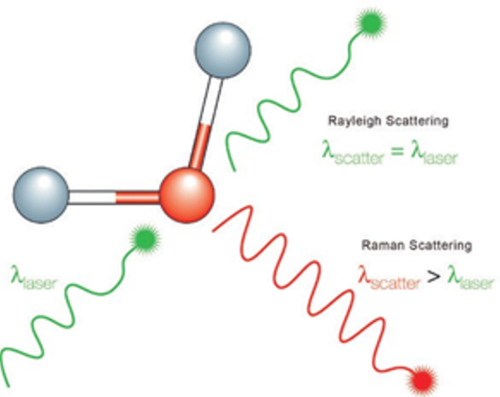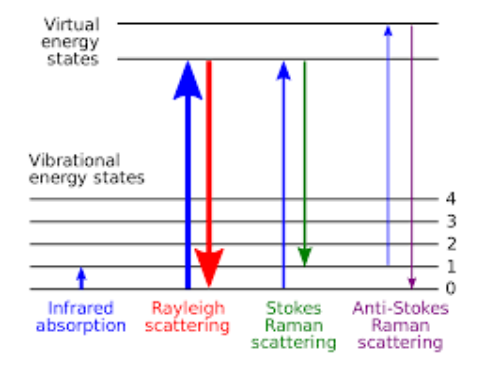Basics of Raman Spectroscopy
RAMAN SPECTROSCOPY
Raman spectroscopy is a technique based on inelastic scattering of monochromatic light.
Inelastic scattering means that the frequency of photons in monochromatic light changes upon interaction with a sample. Photons of the light are absorbed by the sample and then reemitted. Frequency of these reemitted photons is shifted up or down in comparison with original monochromatic frequency, which is called the Raman effect. This shift provides information about vibrational, rotational and other low frequency transitions in molecules.
E ∝ ν ∝ 1/λ
ν = frequency, λ = wavelength, E= energy
The Raman effect was discovered in 1928, and its application for spectroscopy has demonstrated to be a very efficient technique for determining not only the chemical composition, but also the molecular structure of analyzed compounds. By this way, it can be said that this technique allows to obtain the ‘fingerprint’ of analyzed samples.
Additional to these capabilities, the Raman spectroscopy is non-destructive, the sample does not need preparation and it is very fast obtaining results; these characteristics make it ideal for in-situ analysis in space missions, and nowadays it takes part of the new generation of on-board instrumentation in new planetary missions.


Raman Effect and the three scattering processes that are important for Raman spectroscopy.
RLS SCIENTIFIC CAPABILITIES
Raman Laser Spectrometer provides geological and mineralogical information on igneous, metamorphic, and sedimentary processes; especially regarding water-related interactions (chemical weathering, chemical precipitation from brines, etc.). In addition, it also permits the detection of a wide variety of organic functional groups. Raman can contribute to the tactical aspects of exploration by providing a quick assessment of organic content. Applying Raman Spectroscopy to those samples, RLS will be able to:
- Identify organic compound and search for life,
- Identify mineral products and indicators of biologic activity,
- Characterize mineral phases produced by water related processes,
- Characterize igneous minerals and their alteration products,
- Characterize the water/geochemical environment.




